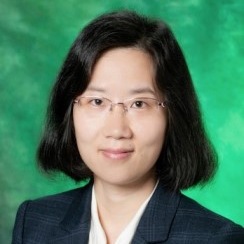Nematic Liquid Crystals
A special issue of Crystals (ISSN 2073-4352). This special issue belongs to the section "Liquid Crystals".
Deadline for manuscript submissions: closed (10 June 2022) | Viewed by 9532
Special Issue Editors
Interests: liquid crystal; polymer; self-assembly; nanofabrication
Interests: molecular modeling; liquid crystals; self-assembly
Special Issue Information
Dear Colleagues,
Nematic liquid crystals (NLCs) are a state of matter that exhibits both crystal and liquid properties. They can change shape as a liquid but still maintain a preferred molecular alignment, thereby showing long-range orientational and/or positional correlations. NLCs are composed of organic, rod-like, disk-like, or lath-like molecules which possess the optical and electrical properties of crystals under certain conditions. NLCs can also adopt chirality by adding chiral dopant. Additional advantages of NLCs come from their nature as soft materials—elastomers, sensitive to external stimuli, elasticity, viscosity, as well as the deformation ability of different architectures. The unique properties and characteristics of LCs make them outstanding in many aspects of applications, not only as conventional electronic display materials, but also being used for photonic crystals, sensors, actuators, tissue engineering, etc.
We invite researchers to contribute to this Special Issue on Nematic Liquid Crystals, which is intended to serve as a unique multidisciplinary forum covering broad aspects of chemistry, physics, engineering, and applications of liquid crystalline materials.
The potential topics include, but are not limited to:
- Nanofabrication of nematic liquid crystal;
- Synthesis of liquid crystalline materials;
- Optical sensor of nematic liquid crystal;
- Nematic liquid crystal applied in biological materials;
- Advanced characterization of nematic liquid crystal;
- Liquid crystal elastomers;
- 3D printing of liquid crystalline materials.
Dr. Xiao Li
Dr. Jose Adrian Martinez-Gonzalez
Dr. Camille Bishop
Guest Editors
Manuscript Submission Information
Manuscripts should be submitted online at www.mdpi.com by registering and logging in to this website. Once you are registered, click here to go to the submission form. Manuscripts can be submitted until the deadline. All submissions that pass pre-check are peer-reviewed. Accepted papers will be published continuously in the journal (as soon as accepted) and will be listed together on the special issue website. Research articles, review articles as well as short communications are invited. For planned papers, a title and short abstract (about 100 words) can be sent to the Editorial Office for announcement on this website.
Submitted manuscripts should not have been published previously, nor be under consideration for publication elsewhere (except conference proceedings papers). All manuscripts are thoroughly refereed through a single-blind peer-review process. A guide for authors and other relevant information for submission of manuscripts is available on the Instructions for Authors page. Crystals is an international peer-reviewed open access monthly journal published by MDPI.
Please visit the Instructions for Authors page before submitting a manuscript. The Article Processing Charge (APC) for publication in this open access journal is 2100 CHF (Swiss Francs). Submitted papers should be well formatted and use good English. Authors may use MDPI's English editing service prior to publication or during author revisions.
Keywords
- Nematic liquid crystal
- Nematic active matter
- Liquid crystal elastomer
- Self-assembly
- Liquid crystal glasses
- Interfacial structures
Benefits of Publishing in a Special Issue
- Ease of navigation: Grouping papers by topic helps scholars navigate broad scope journals more efficiently.
- Greater discoverability: Special Issues support the reach and impact of scientific research. Articles in Special Issues are more discoverable and cited more frequently.
- Expansion of research network: Special Issues facilitate connections among authors, fostering scientific collaborations.
- External promotion: Articles in Special Issues are often promoted through the journal's social media, increasing their visibility.
- e-Book format: Special Issues with more than 10 articles can be published as dedicated e-books, ensuring wide and rapid dissemination.
Further information on MDPI's Special Issue policies can be found here.







